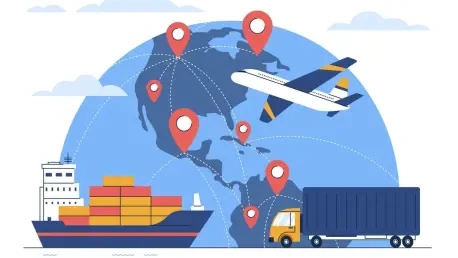In the heart of Southeast Asia’s bustling markets, a quiet economic battle unfolds as the United States ramps up efforts to secure its foothold in one of the world’s fastest-growing regions, with global supply chains at stake and competition intensifying. The US has unveiled a series of trade pacts that could reshape economic alliances, signaling a pivotal moment for American influence in a region critical to balancing global trade power.
Why Southeast Asia Matters as a Trade Frontier
Southeast Asia stands as a vital arena for US economic strategy, with its rapidly expanding markets and strategic geographic position. Home to over 650 million people and economies projected to grow by 5% annually through 2027, the region offers immense opportunities for American businesses. Beyond sheer market potential, the area serves as a counterweight to other global powers vying for dominance, making it a focal point for US policymakers aiming to diversify trade partnerships.
The stakes are heightened by the region’s role in global supply chains, particularly in sectors like electronics and critical minerals. Disruptions in these areas can ripple across continents, impacting American industries from technology to automotive. Securing stronger ties here is not just about trade volume but about ensuring stability and access in a world of increasing uncertainty.
This focus on Southeast Asia also reflects a broader shift in US trade priorities, moving toward regional alliances that can bolster economic resilience. By embedding itself deeper into ASEAN markets, the US aims to create a buffer against geopolitical tensions elsewhere, setting the stage for a more secure economic future.
The Geopolitical Weight of Southeast Asian Trade
Beyond market access, Southeast Asia holds immense geopolitical significance for the US as a means to offset China’s growing influence in the region. With China’s Belt and Road Initiative expanding infrastructure and trade networks across ASEAN nations, the US sees economic partnerships here as essential to maintaining a balance of power. This dynamic was evident during recent high-level discussions at the ASEAN summit in Malaysia, where US officials underscored the need for fair trade practices.
The region’s centrality to global shipping routes, including the South China Sea, adds another layer of importance. Control over these pathways affects not just trade but also national security interests for the US. Strengthening economic bonds with countries like Vietnam and Thailand helps ensure that American interests remain protected in these critical corridors.
Moreover, Southeast Asia’s young, tech-savvy population presents a long-term opportunity for US digital and innovation sectors. By fostering trade agreements that prioritize digital trade and intellectual property protections, the US is positioning itself as a partner of choice for the region’s future growth, aligning economic goals with strategic imperatives.
Major US Trade Pacts and Frameworks in the Region
Recent trade agreements with Southeast Asian nations highlight a multifaceted US approach to deepening economic ties. With Malaysia and Cambodia, the US has secured reciprocal tariff reductions, maintaining rates between 19% and 20% on imports while offering select products a 0% rate. Malaysia’s commitment to invest $70 billion in US sectors like semiconductors and aerospace underscores the scale of these partnerships, promising mutual benefits.
Framework deals with Thailand and Vietnam focus on supply chain resilience and market access. Thailand has pledged $2.6 billion annually for US agricultural products and plans to procure 80 American aircraft, while Vietnam is working to dismantle digital trade barriers. These efforts aim to create smoother trade flows and address modern challenges like cybersecurity in commerce.
Additional measures include removing non-tariff barriers and securing critical resources. Commitments to align regulatory standards, such as accepting US safety and emissions rules, facilitate faster market entry for American goods like meat and poultry. Malaysia’s assurance against export controls on rare earth elements further guarantees stable access to materials vital for US technology and defense industries, painting a robust picture of economic collaboration.
Insights from Trade Diplomacy Leaders
Voices from the forefront of these negotiations provide a clearer understanding of the stakes involved. US Treasury Secretary Scott Bessent recently expressed cautious optimism about parallel discussions with China, noting that a framework to delay punitive tariffs could ease tensions while the US focuses on Southeast Asia. His perspective highlights the delicate balance of managing multiple trade fronts without losing regional momentum.
American exporters have also voiced support for these new agreements, with one agricultural business leader in Thailand describing the tariff reductions as a “game-changer” for accessing local markets. Such firsthand accounts reveal the tangible impact of these deals, from boosting sales to fostering long-term business relationships in the region.
Expert analysis further reinforces the importance of these initiatives, with trade economists pointing to a 15% projected increase in US-ASEAN trade volume over the next two years due to recent pacts. Combined with data like Malaysia’s $150 billion purchase commitments, these insights from stakeholders and specialists underscore the real-world significance of US efforts in Southeast Asia.
Actionable Steps to Sustain Trade Momentum
Ensuring the longevity of these trade relationships requires strategic planning and sustained commitment from both policymakers and businesses. One key approach involves deepening commercial engagements through incentives for US exporters to match large-scale deals like Malaysia’s $150 billion in purchases. Such initiatives can drive reciprocal investments and solidify economic interdependence across borders.
Another priority lies in building supply chain resilience through joint task forces with nations like Vietnam and Thailand. These collaborative bodies can tackle issues like duty evasion and secure access to critical resources, ensuring that disruptions are minimized. This step is crucial for industries reliant on seamless cross-border operations, from manufacturing to technology.
Finally, streamlining regulatory alignment across ASEAN through a unified framework can reduce non-tariff barriers more effectively. Coupled with careful navigation of China relations—leveraging tariff truce progress to maintain focus on Southeast Asia—these strategies offer a roadmap for sustained growth. Tailored to the unique dynamics of the region, such measures provide a practical foundation for enduring US trade partnerships.
Reflecting on a Strategic Economic Pivot
Looking back, the US initiatives in Southeast Asia marked a defining chapter in global trade dynamics, weaving a network of agreements that bolstered economic ties with ASEAN nations. These efforts, from tariff reductions to massive investment commitments, laid a foundation for resilience against global uncertainties. The balance struck between regional partnerships and broader diplomatic maneuvers, such as tariff discussions with China, showcased a nuanced approach to economic strategy.
As these pacts began to reshape market access and supply chains, the next steps hinged on consistent policy support and business engagement. Prioritizing joint innovation in digital trade and resource security could further strengthen these bonds. Exploring expanded frameworks for small and medium enterprises to tap into ASEAN markets might also unlock untapped potential, ensuring that the benefits of these trade ties reach broader segments of the economy.









